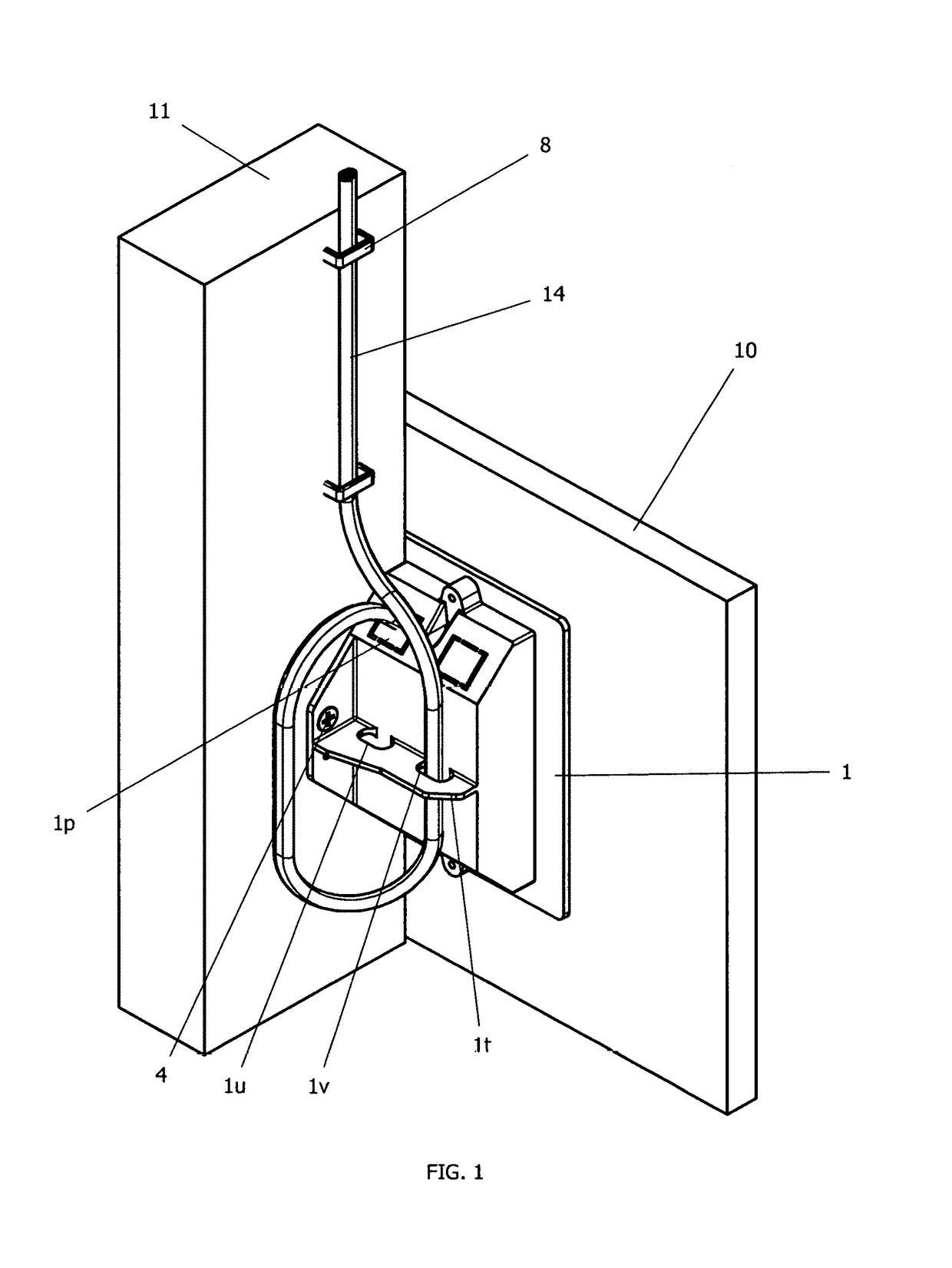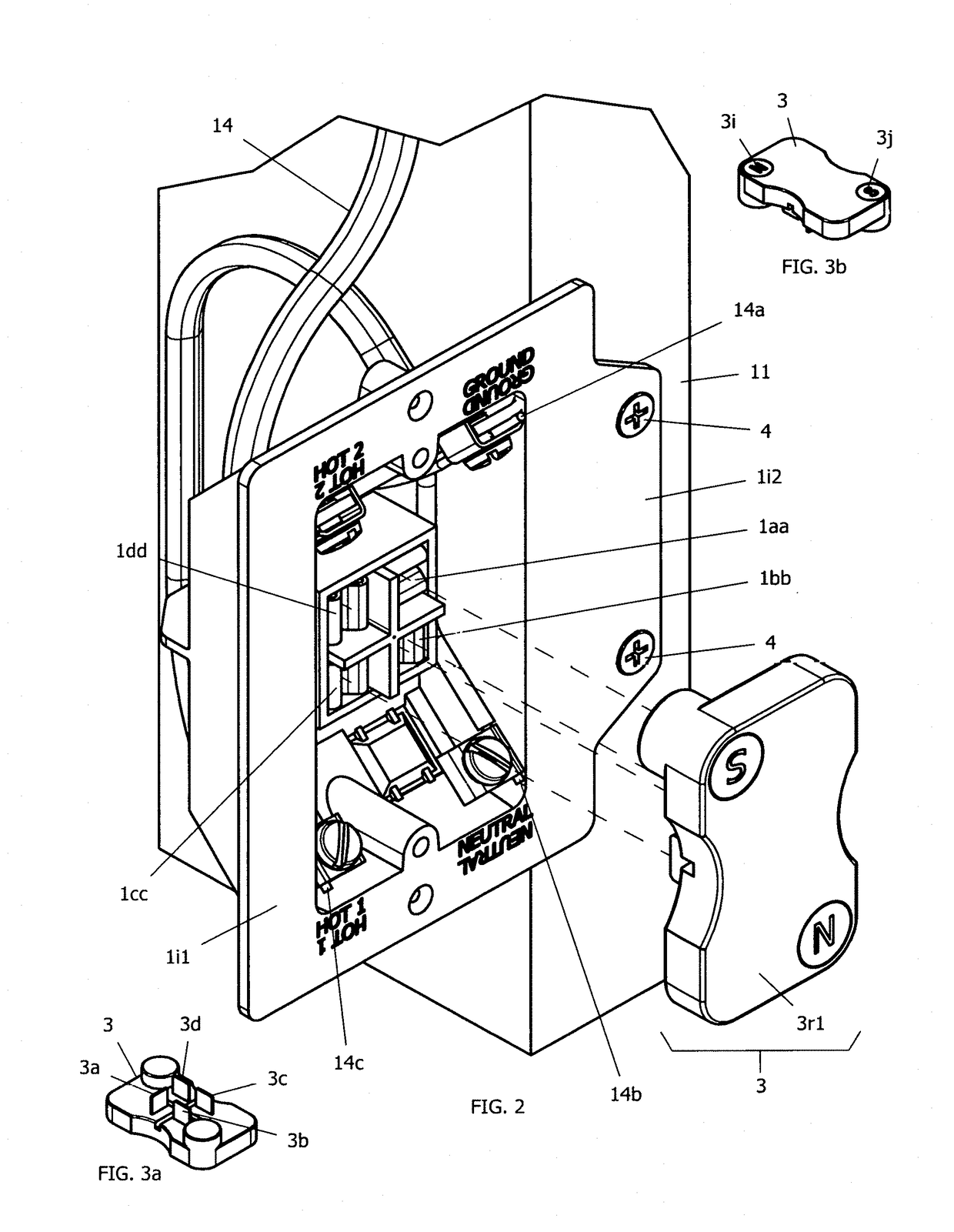Efficient installation electrical hardware system and method of use
a technology of electrical hardware and installation method, which is applied in the installation of electric cables, electrical apparatus casings/cabinets/drawers, construction, etc., can solve the problems of difficult accurate determination of the correct location of the electrical box hole, significant difficulty in ceiling installation, and difficulty in removing wires from the ceiling, so as to simplify the installation of power outlets and simplify the use of electrical switches. , the effect of simplifying the installation of wires
- Summary
- Abstract
- Description
- Claims
- Application Information
AI Technical Summary
Benefits of technology
Problems solved by technology
Method used
Image
Examples
Embodiment Construction
[0065]As required, detailed embodiments of the present invention are disclosed herein; however, it is to be understood that the disclosed embodiments are merely exemplary of the invention which may be embodied in various forms. Therefore, specific structural and functional details disclosed herein are not to be interpreted as limiting, but merely as a basis for the claims and as a representative basis for teaching one skilled in the art to variously employ the present invention in virtually any appropriately detailed structure.
[0066]Reference is now made to the drawings, wherein like characteristics and features of the present invention shown in the various FIGS. are designated by the same reference numerals.
[0067]FIG. 1 shows an isometric view of the rear of one prototype version of the efficient installation electrical hardware system in its installed configuration. This first preferred embodiment is for a power outlet and it is illustrated to show how it would look from inside a ...
PUM
 Login to View More
Login to View More Abstract
Description
Claims
Application Information
 Login to View More
Login to View More - R&D
- Intellectual Property
- Life Sciences
- Materials
- Tech Scout
- Unparalleled Data Quality
- Higher Quality Content
- 60% Fewer Hallucinations
Browse by: Latest US Patents, China's latest patents, Technical Efficacy Thesaurus, Application Domain, Technology Topic, Popular Technical Reports.
© 2025 PatSnap. All rights reserved.Legal|Privacy policy|Modern Slavery Act Transparency Statement|Sitemap|About US| Contact US: help@patsnap.com



